In the New Testament, Yahshuah, or Jesus perpetuated Israel’s righteous worship. The apostolic assembly was composed of ethnic Israelites. The worship of the true Mighty One Yahweh was restored through Jesus in the assembly of His called –out ones. The True Worshipers are called by the name of the Father: “For this cause I bow my knees unto the Father of our Master Yahshua Messiah, of whom the whole family in heaven and earth is named,” (Eph 3:14-15) They bear the same name that the True Worshipers of Israel bore in the Old Testament.
Aurelian (270-275 A.D.) had essayed to establish an official religion broad enough to embrace all the cults of his dominions and which would have served, as it had among the Persians, both as the justification and the prop of imperial absolutism. His hopes, however, were blasted, mostly by the recalcitrance of the Christians. But the alliance of the throne with the altar, of which the Caesars of the third century had dreamed, was realized under another form; and by a strange mutation of fortune the Church itself was called upon to support the edifice whose foundations it had shattered. The work for which the priests of Serapis, of Baal, and of Mithra had paved the way was achieved without them and in opposition to them. Nevertheless, they had been the first to preach in Occidental parts the doctrine of the divine right of kings, and had thus become the initiators of a movement of which the echoes were destined to resound even “to the last syllable of recorded time.”
Declaring Independence from YHWH in the Bible Translations
When persecution of the Christians was undertaken by Diocletian (303-311), it was because he wanted to establish a church-state in the worship of the sun-god. Emperor Septimus Severus proposed to bring all his subjects together under the worship of Sol Invictus – the Unconquered Sun – and to subsume under that worship all the various religions and philosophies then current. All gods were to be accepted, as long as one acknowledged the Sun.
The New Testament declares that the future of the cosmos is being determined by the church: “And to make all men see what is the fellowship of the mystery, which from the beginning of the world hath been hid in God, who created all things by Jesus Christ: To the intent that now unto the principalities and powers in heavenly places might be known by the church (The Vulgate translation of the Grek word 'ekklesia') the manifold wisdom of God.” (through the church should be made known the all-embracing wisdom of God.” - “the many phases of God's wisdom”...”soul now see the complex wisdom of God's plan being worked out through the Church” (Eph 3:9-10)
The English word church has no etymological relationship to the Greek ekklesia. The word ekklesia does not refer to a building; rather, it specifies a group of called out believers. It was used to translate the Hebrew word qahal in the Old Testament. The word qahal means a group of called out believers. Probably from this word came out the English word call.
In Dt 23, the Hebrew term Qahal Yahweh (assembly of Yahweh) is found six times. It is translated congregation in the King James version. The Greek Septuagint translated it ekklesia. We must conclude that the True Worshipers, who composed the ancient congregation of Israel, bore the name Assembly of Yahweh. Israel was the people of the True Mighty One. They were the assembly in the wilderness, Acts 7:38. They were called by his name – Yahweh (2 Chr 7:14)
The Oxford Dictionary of the English Language shows that the root of the word church is circe. The authors claim to be unable to tie the Old English word circe to ancient languages. But Dr. E. L. Bullinger, in Appendix 186 of his Companion Bible, adds this meaning to the word circe: “Compare Hebrew kikkar (a circle), a circuit or disc.” Undoubtedly the relationship he sought to establish was that the word circe in Anglo-Saxon, or Old English, Greek, and Hebrew, pointed toward ancient pagan sun worship. Consequently, it is obvious that the Lord meant the sun and that “the Lord’s house” (church) was the location where the sun was worshiped.
The Greek word for 'circle' (KUKLOS) is never used in the New Testament. The word 'church' derives from the Druidic circle or fairy ring. The 'circle' is very important in the Druid tradition. Sar (circle, saros) is the Babylonian god of the sky. He is also Assaros or Asshur (the son of Shem), and Zero -- Zero-ana, the chakkra, or wheel, boundless time.
The equilateral triangle symbolizing in the Hindu tradition Maha Deva or Shiva, that is, the element of fire (Acts 2:3) was embraced as the perfect representation of three-in-one, The Trinity. Similar triangle is worn on God’s head on the front page of the Vulgate published in Rome, 1592. The bust of this god is placed in a circle. During the celebration commemorating 500th anniversary of birth of Copernicus (1973), in Frombork, Poland, an icon of Copernicus was displayed evoking the features of Jesus Christ of the Shroud of Turin. The Polish caption is even more revealing of the intentions of the organizers of this celebration, which was also attended by the then Card. K. Wojtyla. It reads: “Truly, this divine masterpiece of the Greatest and Best Being is immense.” The triangle bridging the caption and the icon is the Pythagorean triangle whose sum of the powers has been appointed as the origin of the generation of the cosmic elements.
"The origin of the Trinity is obvious to anyone who will observe the daily manifestations of the sun. This orb, being the symbol of all Light, has three distinct phases: rising, midday, and decay ... God the Father, the Creator of the world, is symbolized by the dawn. His color is blue ... God the Son, the Illuminating One sent to bear witness to His Father before all the worlds .... Yellow is His color and His power is without end. God the Holy Ghost is the sunset phase when the orb of day, robed in flaming red ..." (Manly P. Hall, "The Secret Teachings of All Ages", Ibid.)
Many are asking why the color red was so pronounced during Pope John Paul II's funeral? The commentator at the funeral stated that Roman Emperors had given permission to the Vatican for the Popes to count themselves among Royal Kings. Red is a sign of dignity. Well, Other kings proclaimed themselves to be kings by God's grace, not by Roman Emperor's grace. (What Did Pope John Paul II's Funeral Reveal
www.cephas-library.com/catholic/catholic_what_did_john_paul_2_funeral_reveal)
Also the radiate crown which, in imitation of the Seleucids and the Ptolemies, the emperors had adopted since Nero as the symbol of their sovereigntywas symbolical of the Splendor of the Sun and of the rays which he gave forth, it appeared to render the monarch the simulacrum of the planet-god whose brilliancy dazzles the eyes.
What was the sacred relation established between the radiant disc which illuminated the heavens and the human image which represented it on earth? The loyalist zeal of the Orientals knew no bounds in its apotheosis. The Sassanian kings, as the Pharaohs before them, proclaimed themselves “brothers of the sun and the moon”; and the Caesars were almost similarly regarded in Asia as the successive Avatars of Helios.
Nevertheless, the conception that the Sun had the emperor under his protection and that supernatural effluvia descended from the one to the other, gradually led to the notion of their consubstantiality.
According the World Book Dictionary the term 'consubstantiality' means identity of substance, especially of the Persons of the Trinity.
Testimonium Flavianum: “Now there was about this time Jesus, a wise man, if it be lawful to call him a man. For he was doer of wonderful works.” The Slavonic Josephus hastens to add that he “would also not call him an angel.” Rightly so, because Moses who was also doer of wonderful works was never recognized by Jews as a supernatural being “homoousios” (consubstantial) with God who created the heaven and the earth. The above quoted passage mirrors the problems of Christology brought about by the Nicaea Council of 325. The split between the Nicene Trinitarians and the Arian Christians seems to reflect a rough division between those believing more in a powerful, ruler modeled on a Roman Emperor and those in need of a loving advocate and friend.
The Vulgate cross (as a match of the Greek 'stauros') also originates from the Sun-worship, just like the 'church'. The Solar cross (on the Roof of the Islamic Temple Mount) is probably the oldest religious symbol in the world, appearing in Asian, American, European, and Indian religious art from the dawn of history. Composed of a equal armed cross within a circle, it represents the solar calendar- the movements of the earth, marked by the solstices. Sometimes the equinoxes are marked as well, giving an eight armed wheel. (The swastika is also a form of Solar cross.)The sun cross in its most simplified form is known in Northern Europe as Odin's (Eg. Aten was a variant name of Nordic Odin) cross, after the Chief God of the Norse pantheon. It is often used as an emblem by Asatruar, followers of the Norse religion. The word "cross" itself comes from the Old Norse word for this symbol: kros. The Celtic cross is a symbol of the Celtic Christian Church, borrowed from the pre-Christian Celtic Pagan emblem of the sun God Taranis.
Many Hebrew names of the Old Testament prophets have been “Hellenized” when these names were rewritten in the Greek New Testament. Thus, Isaiah became Isaias, Elisha became Elissaios or Elisseus (Elisus), and Elijah became Helias. The king James Version has retained some of these Hellenized names, but the newer English versions have ignored these Hellenized named , and have preferred, to render them as they are found in the Hebrew Old Testament, namely: Isaiah, Elisha and Elijah. Incidentally, the similarity between the Hellenized Helias (instead of Elijah) and the Greek Sun-deity Helios, gave rise to the well-known assimilation of these two by the Church. (Dr. A.B. Cook, in his book Zeus – A Study in Ancient Religion, vol. I p. 178-179, elaborates on this, quoting the comments of a 5th century Christian poet and others, on this)
Anticipating the Religious Revolution of the Renaissance
Another important change explains the ease of changing the God of Old Testament into the philosophical sun god. The name YHWH has been substituted in Latin translations with the title “Lord” some 6823 times. This title “Lord” is applied to all heathen deities, if the word “god” is not used for them. In most cases “lord” and “god” are used interchangeably for pagan idols. There was an Etruscan house deity whose name was Lar, which signified “Lord”, also known as Larth, who later on became very popular in Rome and became known as Lares, because in Rome the idol statues were usually in pairs. Another name for Zeus eas Lrissaeus, which also was another name for Apollo. Zeus was also known as Larasios or Lariseus, while Larasios was also a surname of Helios. Typical of the syncretism and polytheism of those days, we read of the emperor Alexander Severus (222-235) who “had images of Abraham, Christ and Alexander the Great among his household Lares.” These Lares are to be found in the East as well, seen in niches in Hindu houses.
LORIDE: Thor was the well-known Teutonic war-deity. He was also known as a Sun deity. His surname was Hlorridhi, or Loride. The latter also taken to be Thor's son, who had a wife with the name “Gloria”. This Loride could easily have been contracted from the form “Lord”, or perhaps it could only have served to establish religious syncretism with Larth, and Lord. The prophet Hosea prophesized (2:16-17) “And it shall be, in the day,” says YHWH, 'That you will ... no longer call Me: My Baal, for I will take from her mouth the names of the Baals, and they shall be remembered by their name no more.”
Let me quote in this context the final passage of Arthur Koestler's Sleepwalkers: “The dials on the laboratory panels are turning into another version of the shadows in the cave. Our hypnotic enslavement to the numerical aspects of reality has dulled our perception of non-quantitative moral values; the resultant end-justified-the-means ethics may be a major factor in our undoing. Conversely, the example of Plato's obsession with perfect spheres, of Aristotle's arrow propelled by the surrounding air, the 48 epicycles of Canon Koppernigk, and his moral cowardice, Tycho's mania of grandeur, Kepler's sun-spokes, Galileo's confidence tricks, and Descartes' pituitary soul, may have some sobering effect on the worshipers of the new Baal, lording it over the moral vacuum with his electronic brain.”
The “Wisdom of God” Proclaimed by the Church
According to Tomaso Campanella, the author o the earliest apology of Galileo entitled Apologia pro Galileo the scholastic philosophy was all about the philosophical heliocentrism of the Greeks:
According to the testimony of Laertius, Plutarch, Aristotle, and Galen, Pythagoras first announced to the Gentiles his marvelous doctrine of the motion of the earth, of the sun in the center, and of systems in heaven. He informs them that the moon is another earth, and that the four elements, not to mention water, exist in the stars. Copernicus began to develop his system from the preceding contributions of the Pythagoreans, motivated by the observations of Francesco Maria. The disciple of Pythagoras, Timaeus Locrus, demonstrated by mathematics the diurnal rotation of the earth, and Philolaus of Crotona – the annual revolution of the earth (also by mathematics!) Copernicus then added the motion of libration from the pattern of the motion devised by Thebit of Babylon and King Alphonso of Spain. That such a motion was necessary St. Thomas Aquinas also suggested in Metaphysics from statements of Simplicius*.
Aristotle testifies, that Pythagoras, who located the place of punishment in the center of the earth and made fire the cause of motion, described the earth as mobile and animate**. So Ovid believes in “Metamorphoses”, Origin in his commentary on Ezechiel, and Plato. It is essential, if hell be in the center of the earth, for earth to be hot within, and, according to Gregory and others cited in the argument of St. Thomas, to be mobile. The interpretation of Galileo does not oppose the belief of St. Gregory, but rather that of Aristotle.
If the Fathers are correct when they say the firmament stand unmoved, the stars stand with it. When the Master of the “Sentences,” St. Chrysostom, and other fathers declare, in harmony with Catholic faith that the firmament is unmoved, it is necessary that they state the same of the stars much more vigorously. Since the stars are immobile it follows that the earth is carried about as a ship, and that stars appear to be moved just as from a ship an island or a tower on the shore seems in motion.
The Galileo Trial? What Trial? Plutarch writes that the heliocentric hypothesis of Aristarchus of Samos was apodeiknumi (i.e. dogmatically proclaimed) by a certain Seleucus of Seleukia. When a pope proclaims something “ex cathedra” it is like a heliocentric hypothesis i.e. for a thoughtless multitude…
*This Simplicius became one of the protagonists of Galileo's Dialogue of the Great World Systems.
** J. Kepler wrote about anima telluris
Th. Aquinas' Philosophical Foundation of the Church Heliocentric Atheism
Aristotle argued that a given, finite force cannot move a mobile over an infinite distance or for an infinite time (You know what distance you can make on a gallon of gas).. The implications of this statement for cosmology – in particular, for the motion of the celestial spheres, which derive their eternal motion ultimately from the “First Mover”, in accordance with the maxim “all things that are in motion must be moved by something else” - had been challenged by the Doctor Angelicus, who became the Philosopher of the Papal Court.
Th. Aquinas considered the posibility of a finite and yet invariable moving force, which, being immutable acts always in the same manner (vis infatigabilis, i.e. Perpetual motion)*, and thus he dogmatically** conceived of force as a moving agent independent of and separated from a constantly rejuvenating source, a notion essential for the future conception of the universe as a clockwork in action without the need of a constant supply of additional energy.
Following in the footsteps of Aquinas men like Roger Bacon, Nicolas of Cusa, William of Ockham and Jean Buridan, were “moderns” compared to Copernicus. The Ockhamist school in Paris, which flourished in the 14th century had made considerable advances in the study of motion, momentum, acceleration and the theory of falling bodies – all of which are basic problems of the Copernican universe. They had shown that Aristotelian physics with it “unmoved movers” its “natural” and “violent” motion, was empty verbiage; and they had come very close to formulating Newton's Law of Inertia. In 1337 Nicolas of Oresme had written a Commentary on Aristotle's De Coelo – in fact, a refutation of it – in which he attributed the daily round of the heavens to the rotation of the earth. Copernicus was the last of the Aristotelians among the great men of science.
Jean Buridan, following in the footsteps of John Philoponus and Avicenna, proposed that motion was maintained by some property of the body, imparted when it was set in motion. Buridan named the motion-maintaining property impetus. Moreover, he rejected the view that the impetus dissipated spontaneously, asserting that a body would be arrested by the forces of air resistance and gravity which might be opposing its impetus. Buridan further held that the impetus of a body increased with the speed with which it was set in motion, and with its quantity of matter. Clearly, Buridan's impetus is closely related to the modern concept of momentum. Buridan saw impetus as causing the motion of the object. Buridan anticipated Isaac Newton when he wrote:
...after leaving the arm of the thrower, the projectile would be moved by an impetus given to it by the thrower and would continue to be moved as long as the impetus remained stronger than the resistance, and would be of infinite duration were it not diminished and corrupted by a contrary force resisting it or by something inclining it to a contrary motion
*Kepler himself later added that his whole system of celestial physics made perfect sense “if the word soul (anima) is replaced by force (vis). So he boldly pointed the way from the world under God's care to a mechanical explanation of the universe. “spirits” and “celestial intelligences” would be replaced by forces.
Might it not be possible, Kapler asked, “to show that the celestial machine is not so much a divine organism but rather a clockwork ... inasmuch as all the variety of motions are carried out by means of a single magnetic force of the body, just as in a clock ll motions arise from a very simple weight.”
When the English physician William Gilbert (1544-1603) published his work on magnetism in 1600, Kepler thought that at last he saw the force that accounted for celestial movements.
**Statements of speculative philosophy (‘knowledge of good and evil’) were termed by Latin writers decreta, scita, placita, axiomata, enunciata, effata. Cicero replaced all these terms by one: dogmata. Inquisition was not an invention of Catholic Church; already Plato wanted to defend his dogmas with the help of such an institution. Two German adjectives ‘apodiktisch’ and 'unfehlbar’ (infallible) are synonymous.
And thus the foundation of the heliocentric system was laid and the system itself was suggested in the Aquinas's statement that “the geocentric system is only a hypothesis, and that celestial movements are perhaps susceptible of explanations by theories yet to be discovered by man (Summa Theologica 1a 2ae p. IX, art. 5). Kepler's magnum opus, published in 1609 bears the significant title:
A NEW ASTRONOMY Based on Causation
or PHYSICS OF THE SKY
derived from the investigation of the
MOTIONS OF THE STAR MARS
Founded on Observations of THE NOBLE TYCHO BRAHE
They were the first “natural laws” in the modern sense; particular phenomena, expressed in mathematical terms. They divorced astronomy from theology, and married astronomy to physics. Aquinas's wish had been granted.
And that explains why Leibnitz referred to Newton's entire concept of gravity mockingly as “the rebirth in England of a theology that is more than papist and a philosophy entirely scholastic since Mr Newton and his partisans have revived the occult qualities of the school with the idea of attraction.”
Aquinas' contempt for the Biblical geocentricism is echoed in Laplace's answer to Napoleon's comment on his book on celestial mechanics: “I do not find mention of God in this work.” To that Laplace answered haughtily: “I found no need of that hypothesis.”
The atheistic implications of the system suggested by St. Thomas Aquinas and “discovered” by N. Copernicus are obvious if it is remembered that gravity which replaced the Copernican impetus and Kepler's “anima telluris” was considered by Hegel as the “eternal phenomenon” (Urphaenomenon) of matter. And thus Heraclitus' theory of flux (cp. Newton's fluxions) was vindicated. The notion of freely-falling bodies and of planets in their orbits are immediate result of this primary quality of matter and are thus “absolute free” (i.e. Independent of God's will) motions. One has to keep in mind the German proverb When the apple falls, God has broken the stalk, to grasp both sides of the problem.
Following Tillich, Bishop Robinson tells us that we must give up belief in God as somebody 'out there' just as Copernican astronomy made people abandon 'the Old Man in the sky.' B. Malinowski spoke of the state of mind of an unbeliever like himself as 'tragic and shattering.' Not only does the absence of God make the universe 'lonely' 'soulless', and 'tragic' but it also deprives it of love. The wild genocide on the arenas of the ancient Rome was an outcome of this Godless universe with its persistent tendency to assimilate human to animal nature. And that's what atheism really means.
On 28 April 1536 Cardinal Nicolas Schoenberg resigned from his office at age 63 (a ruse commonly practiced by politicians and signaling an important turn in their political careers) and a few months later on 1 November 1536 he wrote now-famous letter to Copernicus encouraging him to publish his book. Only one year earlier in 1535 he was elevated to Cardinal by Pope Clement VII..
Interestingly in the same year (1536) the Jesuit Juan de Mariana published his “rehabilitation” of the philosophical evolutionism. Man in the state of nature* would be man stripped of all the clothing time has put upon him, divested of all specific habits and notions that belong to particular times, thrust outside all circumstance that is not permanent, at once an absolute and a mere potentiality. Nothing of man would there remain but which is at all times. There was a time, he says, when men lived as the animals; they lived without law or government and therefore without rights or property as the animals do. In fact they were animals; he implies quite distinctly, that they were not fully human. Perhaps the most original thing in his book is the dim vision of man emerging from the semi-brute (ape-man) of the state of nature into a conscious of himself and of right and so into full humanity. It is perhaps significant that for him the inner light by which we know right from wrong was vox naturae rather than vox Dei. In the English “Dialogues Between Cardinal Pope and Thomas Lupset” written bet. 1536 and 1538 Pole expresses doubt in the life of civility. It seems to him that man was not born for civilization, but rather to live in a wild forest, then mere following the study of virtue, as it is said men did in the Golden Age. “A time there was, Master Lupset,” says Pole, “when man without city or town, law or religion, wandered abroad in the wild fields and woods, not otherwise than you see now brute beats to do”. In this condition he “long continued for many years, till he came at length to some order and civility and so gradually, “in long time, by little and little to the civilization that is now.” Darwinism is, obviously, an old hat! in the Apostle’s words,
“But a natural man does not accept the things of the Spirit of God, for they are foolishness to him; and he cannot understand them, because they are spiritually appraised.” Natural man hearkens to calls of the wild.
*Natural Man portrayed in Tharsymachean guise has two main characteristics. His psychological make-up is simple: he is out to get what he wants, and what he wants is narrowly circumscribed. Power and pleasure are his exclusive interests. But to get what he wants this wolf has to wear the sheeps clothing of the conventional moral values. His masquerade can only be carried through by putting the conventional moral vocabulary to the service of his private purposes. He must say in the law courts and the assembly what people want to hear, so that they will put power into his hands. Thus the arête of such a man is to learn the craft (special skill), the techne, of molding people by rhetoric. He must take them by the ear before he takes them by the throat.
After Diogenes the Cynics became a religious order without religion; they made a rule of poverty, lived on alms, tempered their celibacy with promiscuity, and opened schools of philosophy. They had no homes, but taught and slept in the streets or the temple porticos. They thought that they could turn and live with the animals, like Darwinists. They were Greek Franciscans without theology.
In philosophy heliocentrism went hand in hand with evolutionism and that explains the double rehabilitation of heliocentrism and evolutionism by Pope John Paul II.
Joscelyn Godwin, professor of music at Colgate University and th author of over fifteen highly-regarded books on music, harmony and the Western esoteric traditions wrote in The Pagan Dream of the Renaissance: “During the Renaissance, a profound transformation occurred in Western culture, fueled in large part by the rediscovery of the mythological, pagan imagination. While the Greek gods and goddesses had never been entirely eclipsed during the 'Dark Ages', with the Renaissance their presence once again became a powerful force in Western civilization.” J. Godwin explains how the European imagination was seduced by the pagan gods, and how people of wealth and leisure began to decorate their villas and places with images of them, write stories about them, and even produce music and dramatic pageants about them. In its deepest and most vibrant form, we discover how the pagan dream of the Renaissance represented nostalgia for a classical world untroubled by sin and in no need of redemption.
Let me remind here that the above mentioned hierarch Schoenberg was appointed Archbishop of Capua on 12 September 1520 by Pope Leo X.. Renaissance Pope Pius II (1458-64) believed that the Roman Empire had fallen because the scholars had deserted paganism for the Papacy. After Giovanni di Medici was elected Pope Leo X (1475-1521) a lampoon was posted on the Pasquino Navona to the effect that Giovanni might make a good Pope if only he believed in God. When he was elevated to the chair, the Eucharist was accompanied by the pagan gods bearing the inscription: “First Venus reigned (the age of pope Alexander VI) then Mars (Julius II) and now (under Leo X) Pallas Athene holds the scepter.” Rome greeted death of Pope Adrian VI’s after only one-year pontificate with great joy. Some believed that he was poisoned by his physician. Rome does not tolerate a Christian Pope.
This Renaissance revival of the classic paganism paraded as Christianity explains this passage in Copernicus's book:
“In the center of all rests the Sun. For who would place this lamp of a very beautiful temple in another or better place than this from which it can illuminate everything at the same time? As a matter of fact, not unhappily do some call it the lantern, others, the mind, and still others, the Leader of the World. Trismegistus calls it ‘visible God’; Sophocles’ Electra, ‘that which gazes upon all things.’ And so the sun, as if resting on a kingly throne, governs the family of stars* which wheel around.”
The expression “family of stars” belongs to the teachings of the ancient cosmogony. A few years ago, Father George Coyne, head of the Vatican Observatory Research Group suggested that we might view stars as God's sperm, which is the basic teaching of the Aryan cosmogony. Kepler believed that the stars were born o the semen of the sun god. In the Hindu Myth when the desire arose in it (i.e. in the sun god in the shape of linga (phallus) “the creation” or rather emanation or emission of semen followed. The Christian heretic Justin who envisaged Jesus as ever-existent “seed-sowing Reason” believed that the good God was an erect phallus, like Shiva (Hippolytus, Refutation 5.7.21-22)
"Vishnu in the form of the Solar active energy, neither ever rises nor sets, and is at once, the sevenfold Sun and distinct from it," says Vishnu Purana (Book II., Chap. 1 1). Shiva in his symbol linga is referred to as as fixed or immovable (dhruva). Shiva is worshiped in the form of the linga, in the center of the temple, or inner shrine. The cave temple of Elephanta (6th century) and the rock-cut temple of Ellura (8th century) are perfect examples. A baboon with an erected penis was a divinity in ancient Egypt.
Cicero, whose knowledge of astronomy, like that of Copernicus is entirely based on Greek sources, writes in The Rpublic:
“The sun...ruler, prince and leader of the stars, sole and ordering principle of the universe (is) so large and its light brightens and fills the all ... The orbits of Mercury and Venus follow him as his companions (in other words The Scientific American has to be a Fascist, an admirer of the Fuehrer principle)
Macrobius who lived around 400 AD, comments on the passage from Cicero which I have just quoted:
“He calls the sun the ruler of the other stars because the sun regulates their progression and retrogression within spatial limits, for there are spatial limits which confine the planets in their advance and regress relative to the sun. Thus the force and power of the sun regulates the course of the other stars within fixed limits.”
In Thomas Digges' English translation of The revolutions the sun “like the king in the middest of al reigneth and geeveth lawes of motion to ye rest.”
It seems unlikely that the Cardinal Schoenberg would have gone as far as he did in urging publication of the book entirely on his own initiative; and there is further evidence of early vivid interest in the Copernican theory shown by the Vatican. This has come to light through one of the bizarre hazards of history. There exists, at the Royal library in Munich, a Greek manuscript – a treatise by one Alexander Aphrodisius On the Senses and Sensibilities, which is of no interest to anyone whatsoever, except that the title page contains the following inscription:
“Clement VII, High Pontiff, made me a present of this manuscript, A.D. 1533, in Rome, after I had, in the presence of Fra Urbino, Cardinal Joh. Salviato, Joh. Petro, Bishop of Inturbo, and Mattias Curtio, Physician, explained to him, in the Vatican gardens, Copernicus' teaching about the movement of the Earth. Joh. Albertus Widmanstadius,
Cognominatus Lucretius,
Private Personal Secretary to our serene Lord.”
In 1532, the personal secretary of Pope Leo X gave a lecture on the Copernican system, to a select company in the Vatican gardens, which was favorably received, which the above mentioned manuscript conforms.
The Greatest Scandal in the History of Science
A. Koestler wrote in his book The Sleepwalkers: “Copernicus book was and is an all-time worst-seller.
Its first edition. Nuremberg 1543, numbered a thousand copies which were never sold. It had altogether four reprints in four hundred years: Basle 1566, Amsterdam 1617, Warsaw 1854 and Torun 1873
Kaspar Peucer's textbook on astronomy, published in 1551, was reprinted six times in the next forty years. Ptolemy's Almagest and Peuerbach's Planetary Theory reached altogether about a hundred reprints in Germany till the end of the 16th century – Copernicus' book, one!”
The revealing difference between the heliocentric system ascribed by Cardinal Schoenberg to Copernicus in his Letter and the description of the system by the author himself suggests that this high ranking hierarch had in mind rather the Babylonian heliocentrism of Enuma Elish in which the sun god Marduk establishes the earth’s orbit around himself. Cardinal Schoenberg's Letter gave rise to the all-pervasive use of such expressions as “solar system” and “heliocentrism” being inculcated into the minds of hundreds of millions of children all over the world. Here is the most important passage of his Letter which was published in The Revolutions as a second preface, which even denied the controlling power of the earth over its moon.The power of the church sun god is unlimited. Http://hsci.ou.edu/exhibits/exhibit.php?exbgrp=1&exbid=8&exbg=8
“In it (The revolutions) you maintain that the earth moves; that the sun occupies the lowest, and thus the central, place in the universe; that the eight heaven remain perpetually motionless and fixed; and that, together with the elements included in its sphere, the moon, situated between the heavens of Mars and Venus, revolves around the sun in the period of a year. I have also learned that you have written an exposition of this whole system of astronomy, and have computed the planetary motions and set them down in tables, to the greatest admiration of all.”
And this letter explains the fact that De revolutionibus was read and at least partially taught at leading Catholic universities, immediately after its publication.
The Book of Revelation, has warned us of this in Rev 17, Rev. 18, Rev. 19, and also in Rev. 13, Rev. 14, and Rev. 16, Mystery Babylon. The great harlot has made “the inhabitants of the earth drunk with the wine of her fornication,” “out of the “golden cup” in her hand, “full of abominations and the filthiness of her fornication,” Rev. 17, 1-5. She is also described as as “sitting “on a scarlet beast full of names of blasphemy,” verse 3. Tammuz, alias Bacchus, had a surname Ies (Jesus) or HIS. He was also known as the fish (Ichthus), and had the tau, the cross as a sign. These three things have survived, and are still with us!
But the heliocentric diagram made by Copernicus himself tells a different story. This diagram shows the circular orbit of the moon about the earth, and not about the sun. But that doesn't tell the students in hundreds of thousands of schools throughout the world the whole story. They are taught that Copernicus opposed his heliocentrism to Biblical “primitive” geocentrism and thus became the Father of Modern Science. They keep in mind the easiest part of Copernicus's book i.e. his diagram, which overwhelms them with the circles, all centered on the sun and don't bother to read the unreadable book in which there lies hidden an astonishing surprise, well-known to A. Koestler:
At the beginning (Book 1, chapter 10), Copernicus had stated: “In the midst of all dwells the sun ...Sitting on the royal throne, he rules the family of planets which turn around him... But in Book III, when it comes to reconciling the doctrine with actual observation, the earth no longer turns around the sun, but round a point in space removed from the sun by a distance of about three times the sun diameter. Nor do the planets revolve round the sun – as every schoolboy believes that Copernicus taught. The planets move on epicycles, centered not not on the sun, but on the center of the earth's orbit. There are thus two royal thrones: the sun, and that imaginary point in space around which the earth moves.” Copernicus's book is not at all about heliocentrism!
In Copernicus' book the center of the earth orbit is as divine as the sun; In the Aryan cosmogony puru (point) is a god. In short, the imaginary point appears equal in importance in governing the solar system to the sun god itself, and, in fact, nearly as important as in the Big Bang theory which derives the whole cosmos from an explosion of a point (pellet) of matter. In the beginning Matter exploded...The modern Bigbangcentrism does contradict the Copernican “heliocentrism”; It jammed the religious aspect of the Copernican heliocentrism especially as developed by Kepler who identified the Sun with God the Father of the Christian Trinity and thus tied up heliocentrism with the paganized Christian religion. This baptism of the Copernicus's sun god has been overlooked by the authors of Science textbooks. Similarly, Newton's identification of gravity with the spiritual body of Christ is never mentioned. That's why atheistic science is usually expressed in superficial slogans about 'momentum' 'inertia' and defended by the modern Inquisition as exposed in Ben Stein's video “Expelled.” No patent office has ever accepted Copernicus's perpetual motion machine (machina mundi).
Behind this perverted science lies the Pythagorean dogma proclaiming that extended physical bodies are composed of non extended mathematical points. Accordingly, Zeno argued that everything in the universe is both infinitely large and has no size at all. The infinite divisibility of any physical body regardless of size means that it is composed of an infinite number of elements and thus is infinitely large. On the other hand, the body has no size at all because no number of non extended units can produce an extended body. Pure schizophrenia!
In other words there is no reason to call the Copernican system the Solar System, since we have two centers of the world; the heavenly bodies do not all move round the same center. The above passage also confirms and at the same time contradicts Copernicus's self-contradictory axioms published a few year earlier in his Commentriolus:
1.That the heavenly bodies do not all move round the same center;
2.That the earth is not the center of the universe, only of the moon's orbit and of terrestrial gravity;
3.That the sun is the center of the planetary system and therefore of the universe.
And that's the main idea of the monarchical dictature of heliocentrism. A true dictator doesn't share his power
with anybody. And besides, if the sun is a god, as Copernicus believed it was, how can he be so ignored by his subjects?
Copernicus, like the post-Aristotelian astronomers denied the rule of the sun over the planets and affirmed it at the same time; while conscious reasoning rejects such a paradox, it is in the nature of the unconscious that it may simultaneously affirm and deny, say yes and no to the same question; to know and to un-know, as it were. Atheistic philosophy implies an invisible reality not of personal God, but like that of Plato's ideas, underlying the world of experience. But for them, the ultimate organizing principles are thought of as blind, impersonal and unconscious forces acting by chance.
Galileo's “Improvement” on Copernicus
www.superstock.com/stock-photos-images/1746-319
physics.ship.edu/.../copernican_system.html
Galileo’s own drawing of the heavens, published in his Dialogue in 1632, explains why he retained circular orbits of Copernicus and rejected Kepler's ellipses. The circle in the middle of the zodiac is not the sun; it is the orbit of the sun, which is marked by the circlet on the circumference. Galileo, viewed the sun as the mythological sun god driving his chariot in a circle.
Hark, Hark! The lark at heaven’s gate sings,
And Phoebus’s gins arise.
Middle English ginne was short for Old French engine. Gin-horse moves in a circle or track.
Towards the Heliocentric Holocaust
The Sixtine-Clementine edition of the Latin Bible, also known as the Clementine Bible, was for centuries the standard edition of the Bible in that language. It was first published in 1592 at Rome by Aldus Manutius the Younger. Now, let me dwell in the context for a while on the above mentioned portrait of God placed on the front page of this Bible. According to Christian tradition Christianity began on the Pentecost in an act of outpouring of the Holy Spirit which sat on the Apostle's heads in the shape of cloven tongues of fire;
“And there appeared unto them cloven tongues like as of fire, and it sat upon each of them (Acts 2:3)
Well, a cloven tongue of fire is very suggestive of the shape of a equilateral triangle which symbolized the Hindu god Shiva and which is often depicted on the statues of the Buddha, over his head. In later Christian tradition this triangle of fire was replaced by halos. The Hindu “jamad-agni” is a sage who knows identity of god and fire, which of course is a sun god. And thus the Copernican heliocentrism and the Clementine Vulgate became two pillars of the Fascist ideology hidden behind the mask of “Christianity”.
In Dante’s De monarchia, the “Divine Predestination” of the Roman people as the world ruling power is derived not from interpretations of the Hebrew prophets or from the appointments of Peter but from the genealogical tree of Aeneas and Creusa! Race and not religion is the decisive thing for Dante. Campanella, an early apologist of Galileo observed: “Love is foremost in attending to the change of the race; men and women are so joined together, that they bring forth the best offspring.” Campanella can be considered a father of the modern eugenics which goes hand in hand with the materialism of heliocentrism. Cicero considered Jews a nation condemned to eternal slavery. (nationmibus nati servituti).
Like its predecessor, the Clementine Bible was issued with a new papal bull which forbade the printing of any edition outside the Vatican for ten years, after which no edition could be published unless it had first been collated with a Vatican copy. This secured the position of the Clementine version as the official Bible for the Roman Catholic church. The above mentioned portrait of God in a circle and with a triangle on His head will be properly understood in the context of the following two passages:
The thought that the divinity had written a book moved the theologians to imagine that he had written two, and that the other one was the universe. At the beginning of the 17th c., Francis Bacon declared in his Advancement of Learning that God offered us two books so that we would not fall into error: the first, the volume of the Scriptures, reveals His will; the second, the volume of the creatures, reveals His power and is the key to the former. Bacon intended much more than the making of a metaphor; he believed that the world was reducible to essential forms (temperatures, densities, weights, colors), which formed, in a limited number, an abecedarium naturae or series of letters with which the universal text is written.
Philosophy, Galileo tells Sarsi in the Assayer, is not like the Iliad or Orlando Furioso, books in which the least important thing is whether what is written is true. Galileo’s works abound with the concept of the universe as a book.
The second section of Favaro’s anthology (Galileo Galilei: Pensieri, motti e sentenze; Florence, 1949) is entitled Il libro della Natura. I quote the following paragraph: “Philosophy is written in that very large book that is continually opened before our eyes (I mean the universe), but which is not understood unless first one studies the language and knows the characters in which it is written. The language of that book is mathematical and the characters are triangles, circles, and other geometric figures.” Can anybody translate the Decalogue into the language of Galileo's Book of Nature? Natural History is obviously cubist evolutionism, because it is ultimately derived from Pythagoras's equilateral triangle.
www.plotinus.com/gnostic_jesus_copy.htm
www.nowpublic.com/guys_cliffe_house
www.gnosticjudas.com/jesus.php
Galileo's “chief mathematician” is called “Nature”, not God, and his references to the latter sound like lip-service. Galileo takes the hyperstatization of mathematics a decisive step further by reducing all nature to “”size, figure, number and slow or rapid motion,” and by relegating into the limbo of “subjective” or “secondary” qualities everything that cannot be reduced to these elements – including by implication, ethical values and the phenomena of the mind. Greek Science in the age of decline was faced with an insoluble conflict, which resulted in a split of mind; and this “controlled schizophrenia” continued throughout the dark and Middle Ages, until it came to be almost taken for granted as the normal condition of man. Galileo's world was that of the Cubists* of which the Gnostic Christ in the shape of triangles within the solar orb stood for the Logos of John's Gospel. And this “God” of Galileo became the “god” of the Holocaust.
www.katiemcguire.com/galleryVeryold.html
www.davetheartist.com/cubism_fortyone.html
* The Cubists proclaimed: “One must treat nature by reducing its forms to cylinder, sphere ans cone, all put into perspective, meaning that each side of an object, each plane, is directed towards a central plane. But whether they painted in terms of cubes, cylinders, or cones, the declared aim of the Cubists was to resolve every object to a configuration of regular geometrical solids. in Picasso's Femme au miroir, the reduction of the model's eyes and upper lip to an interplay of spheres, pyramids and parallelepipedes, displays the same ingenuity and inspired madness as Eudoxus' spheres pivoting within spheres.
Clement VIII was already openly anti-semitic, making the usual link of Jews and usury:
All the world suffers from the usury of the Jews, their monopolies and deceit. They have brought many unfortunate people into a state of poverty, especially the farmers, working class people and the very poor. Then as now Jews have to be reminded intermittently anew that they were enjoying rights in any country since they left Palestine and the Arabian desert, and subsequently their ethical and moral doctrines as well as their deeds rightly deserve to be exposed to criticism in whatever country they happen to live.
Clement VIII's approach towards the Jews had more specific targets. In Cum saepe accidere (February 28, 1592) he forbade the long-established Jewish community of the papal enclave of Avignon to sell new goods, putting them at a disadvantage and fostering the cliché of the Jew as a dealer in secondhand goods. With Caeca et obdurata (February 25, 1593) he confirmed the bull of Pope Paul III (1534–49)(to whom Copernicus dedicated his book) that established a ghetto for the ancient community of Jews in Rome, and reiterated the ban on Jews, who had otherwise been formally expelled from the Papal States by Pope Pius V (1566–72) (in Hebraeorum gens, February 26, 1569) dwelling outside of the ghettos of Rome, Ancona, and Avignon, thus ensuring that they remained city-dwellers. Beyond Papal reach, east of Poland, by contrast, farming communities of Jews remained a familiar feature of the landscape. With Cum Haebraeorum malitia a few days later (February 28) he even forbade the reading of the Talmud [1]. It is alleged that Clement VIII's reference to the "blind (Latin: caeca) obstinacy" of the Jews gave rise to the American religious slur "kike".
The old prayer contained in the Tridentine rite mass, which was recited during the Good Friday service of Easter Week belongs to the same solar anti-Semitism of the Roman heliocentric Church-ianity:
For the conversion of Jews. Let us pray also for the Jews that the Lord our God may take the veil from their hearts and that they also may acknowledge our Lord Jesus Christ. Let us pray: Almighty and everlasting God, you do not refuse your mercy even to the Jews; hear the prayers which we offer for the blindness* of that people so that they may acknowledge the light of your truth, which is Christ, and be delivered from their darkness*
F.R. Johnson in his Astronomical Thought in Renaissance England (Baltimore 1937) had shown that the educated Elizabethan had plenty of textbooks in the vernacular instructing him in the Copernican astronomy.
Shakespeare immediately embraced the fashionable doctrine:
The glorious planet Sol
In noble eminence enthroned and spher’d
Amidst the other…
using it to proclaim the glory of the English monarchy:
The sun not only is the King of the sky
But he is like the King
And the King is like sun.
The correspondence between God, the Sun and the King is confirmed by the “healing power of the English King” derived from the “med’cinable eye of the Sol.” In A Christian Familiar Comfort John Norder compares the state to the heavens and Queen Elizabeth and her Council to the primum mobile or controlling sphere, within whose compass any other motion that of Ireland in particular must be contained. Le Roi Soleil is, indeed, one of the most persistent of all Elizabethan commonplaces and was immortalized in her portrait showing her shining face. In Johnson’s Irish Masque the presence of the king is made to transform the apparent wild Irishmen into civilized courtiers: “As the Sun dissolves the chains of winter, and fosters the spring; it is but standing in his eye, you’ll feel yourselves changed by and by, and come forth new-born creatures all. “Click on the link to see the “consubstantial” Elizabeth I
libguides.nmhschool.org/elizabethanengland
ballettalk.invisionzone.com/index.php?showtop... (spotty)
singleservingjack.blogspot.com/2008/03/elizab... (cubist)
www.missionislam.com/knowledge/crusades.htm
dennissiluk.tripod.com/id10.html
www.frontline.org.za/.../JihadAndCrusades.htm
Anticipating a New Crusade
In 1965, the catholic Church established a Commission for the New Vulgate and gave the Commission the responsibility to revise the Latin translation on the basis of updated knowledge. The new text was to be used for Catholic services in Latin.
The first section of the new translation appeared in 1969, and in 1979, Pope John Paul II approved the Nova Vulgata. The first edition contained the divine name, Iahveh, in a number of verses, including Ex 3:15 and 6:3. Then, as a one member of the committee put it, the second official edition, published in 1986, “repented ... Dominus ('Lord') was put back, in place of Iahveh.”
In 2001, after four years of work, the Vatican Congregation for Divine Worship and the Discipline of the Sacraments published its Liturgiam authenticam instruction.
According to this instruction, since the Nova Vulgata is the church;'s official edition, it should be used as a model for all other translations, even if it alters what is indicated in the ancient originals. Only by conforming to such direction can a Bible be accepted by the Catholic hierarchy. This instruction says that in Catholic versions, “the name of almighty God expressed by the Hebrew tetragrammaton YHWH) should be rendered into “any given vernacular by a word equivalent in meaning” to Dominus, or “Lord”, as does the second edition of the Nova Vulgata – even though the first edition used “Iahveh”. The prophecy of Zeph (3:9) sounds like a memento to all heliomaniacs: “For then I will restore to the peoples pure language, that they all may call on the Name of YHWH, so serve Him with one accord.”
Who Is Logos of the Gospel of John
The Vedic concept of Saraswati was three-fold: First, she is like the sacred river (Cp. Darwin's little warm pond) which gave birth to the Aryan civilization. Second, she was vak or speech personified, as expressed in the Rig Veda's Vak Sukta . 'Speech' basically refers to the sacred-word or the Vedas themselves.
aalopaalo.blogspot.com/2007/09/heart-chakra.html
assentingcatholic.blogspot.com/
vultus.stblogs.org/2007/12/
geocities.com/.../Olympus/7771/divmercy.html
A certain Mr. Turretin, in describing the state of Christianity in the fourth century, said “that it was not so much the Roman Empire that was brought over to the Faith, as the Faith that was brought over to the empire, not the Pagan who were converted to Christianity, but Christianity that was converted to Paganism. A further witness to this paganism of the Messianic faith is the emperor Hadrian, who, in a letter to the Consul Servianus, wrote, “There are there (in Egypt) Christians who worship Serapis, and devoted to Serapis are those who call themselves 'Bishops of Christ.'”
The blood relatives of Jesus were called the desposyni meaning literally in Greek Belonging to the Lord. This name was reserved exclusively for his blood relatives and for the first century and a half was highly respected and esteemed. The entire ancient Jewish Christian Church had always been ruled by their own desposynos and each one carried the names traditional in Jesus’ family.
Since Hadrian’s conquest of Jerusalem in 135 CE, all Jews, and seemingly Jewish Christians, had been forbidden to enter Jerusalem. Thus, the doctrinal position of the original system was excluded from Jerusalem which was seen as central to the faith. The Jewish Christians had comprised the only Christian church in Jerusalem until 135 CE. They had left it only once, before the capture of Jerusalem by Titus in 70 CE, when they fled to Pella under Symeon according to most scholars. In 72 CE they returned to Jerusalem. They set up Christian churches all over “Palestine,” Syria and Mesopotamia but they came into conflict with the Greek Christian churches because of the problems with the observance of the law or Torah.
Their system of government was based on that of the congregation (i.e. democratic institution, like a parliament and not not monarchy like the papacy and all other monarchs) was also in issue. In 318 CE, the desposyni asked Sylvester, who now had Roman patronage, to revoke his confirmation of the authority of the Greek Christian bishops at Jerusalem, in Antioch, in Ephesus, and in Alexandria, and to name desposynos bishops in their stead. Sylvester dismissed their claims and said that, from now on, the mother church was in Rome and he insisted they accept the Greek bishops to lead them. This was the last known dialogue with the Sabbath-keeping church in the east led by the disciples who were descended from blood relatives of Jesus.
Their fate is an utter condemnation of the religion that claimed to represent Jesus Christ. They hunted down and killed his blood relatives because they stood in condemnation of the system that purported to represent him. It was totally opposed to all that he taught and practiced.
Saturday, April 17, 2010
Subscribe to:
Post Comments (Atom)

















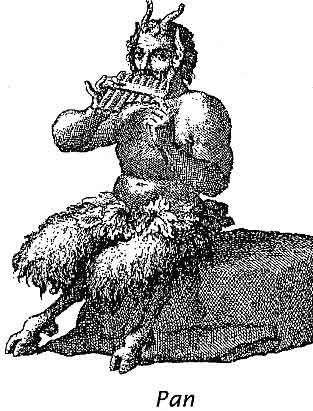














































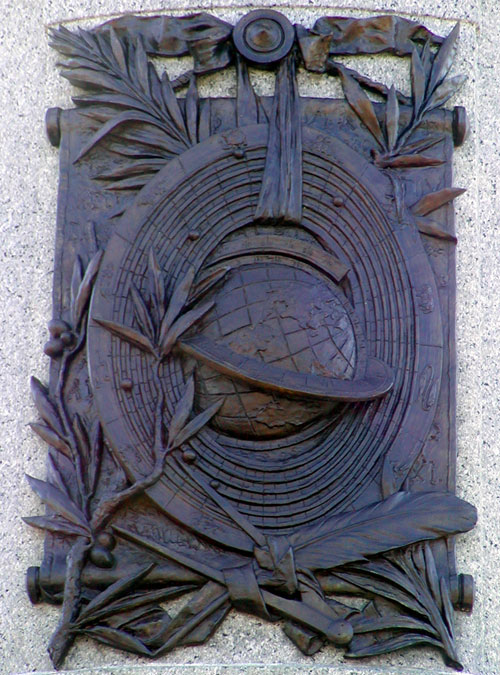







































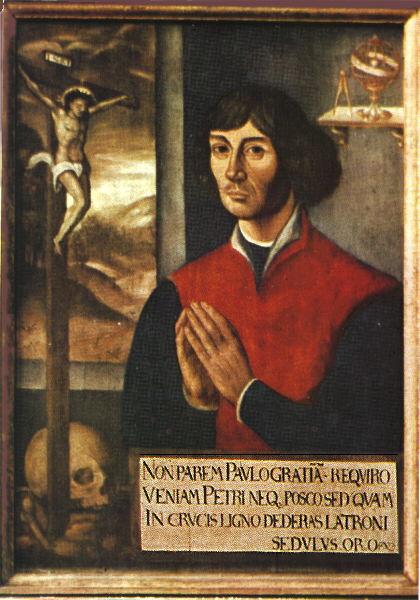















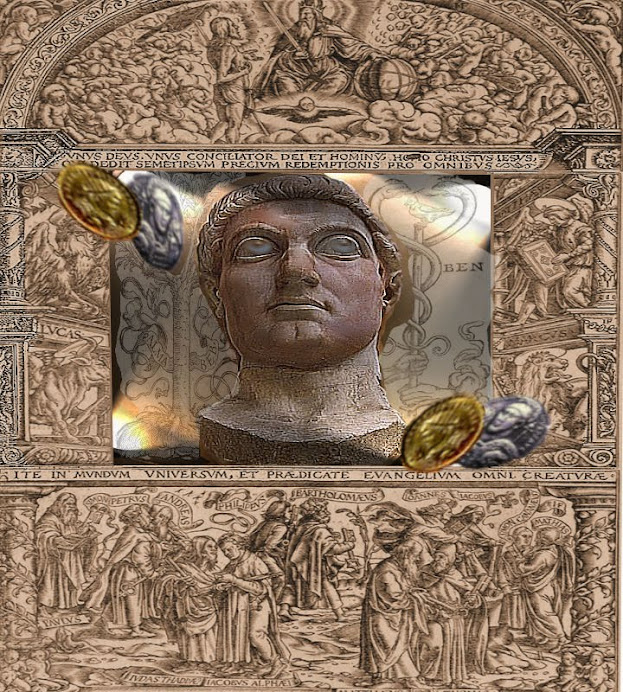



















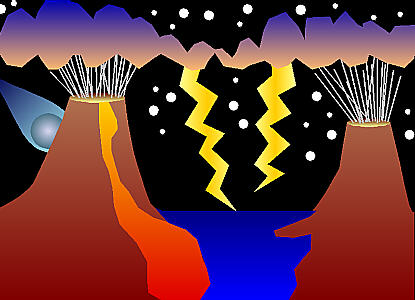


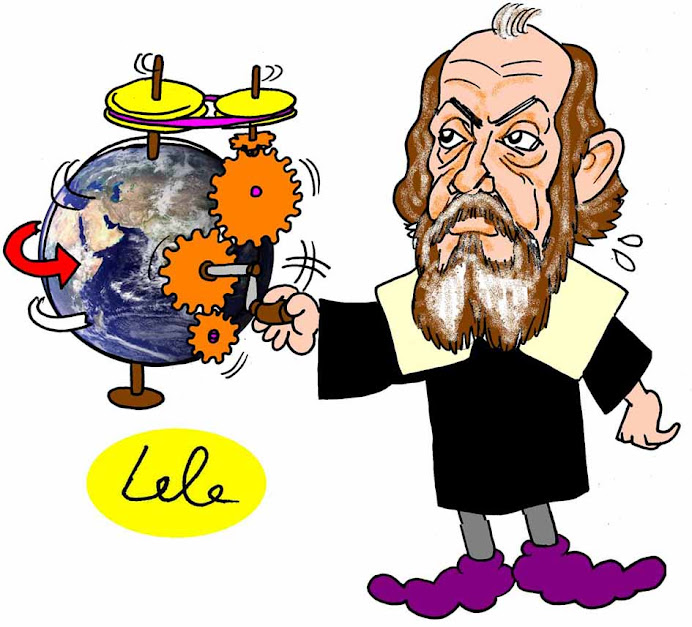













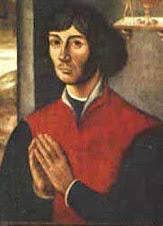.jpg)



















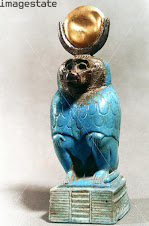








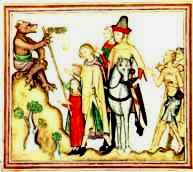

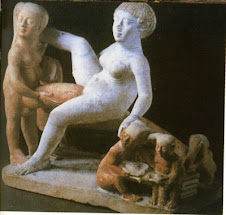











.jpg)






























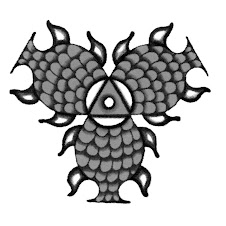











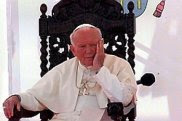















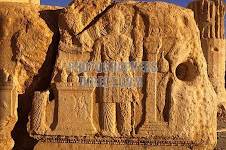
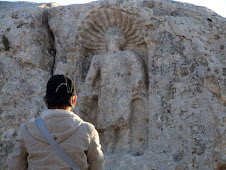






.gif)


























































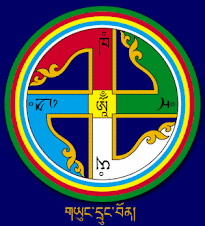

























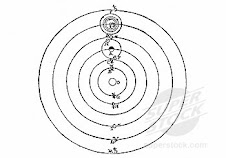

.jpg)













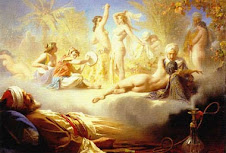
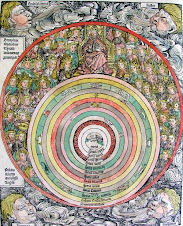












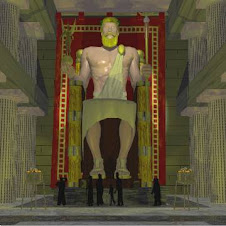


















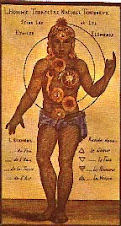






















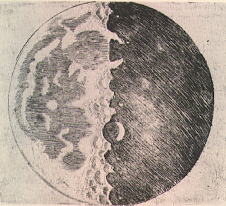




















































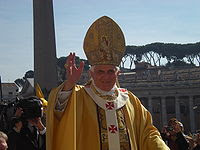

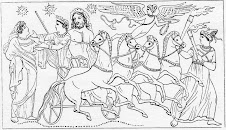
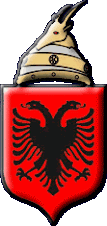







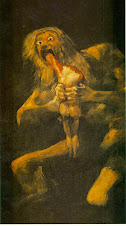




















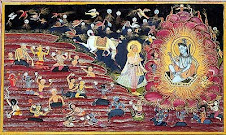

















++of+the+Sun+god..jpg)

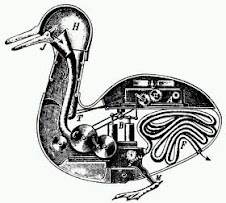








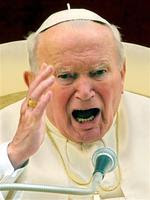


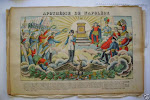



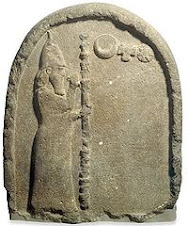





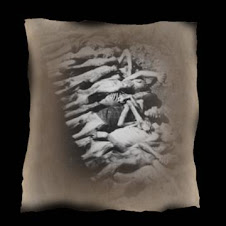




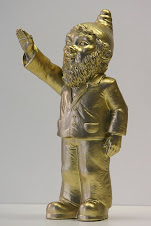









I like what you guys are up also. Such clever work and reporting! Keep up the superb works guys I've incorporated you guys to my blogroll. I think it will improve the value of my website :)
ReplyDeleteSKF 34384 Rear Wheel Seal